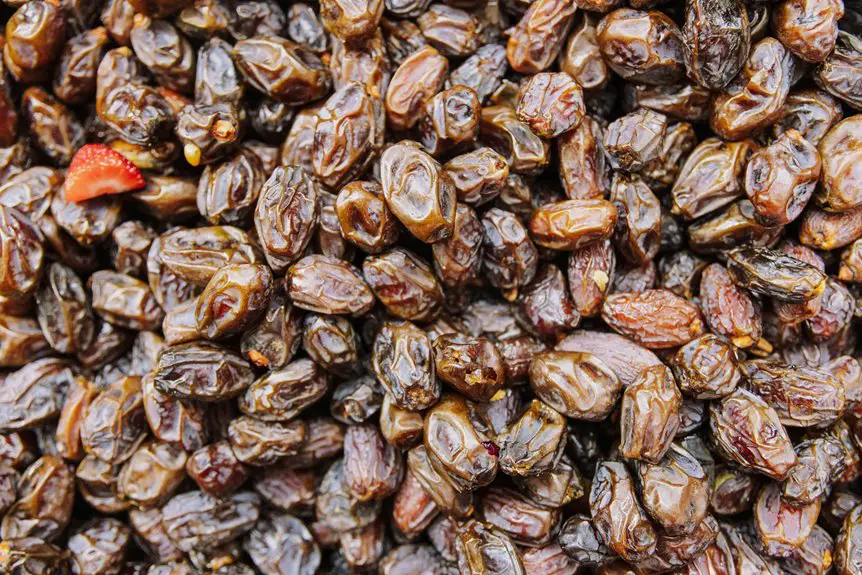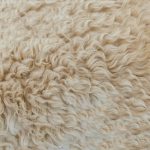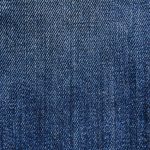You rely on polyamide fiber, or nylon, daily for its strength, durability, and elasticity. It resists wear, handles moisture well, and stays breathable—perfect for clothing and heavy-duty industrial uses. Made through polymerization and melt spinning, it’s versatile but sensitive to UV light and moisture. Innovations focus on sustainability and smart technologies. If you’re curious about how it’s made or its expanding applications, the next sections offer more detailed insights.
Table of Contents
Key Takeaways
- Polyamide fiber, or nylon, is a durable synthetic fiber with high tensile strength, abrasion resistance, and elasticity, ideal for demanding applications.
- Manufactured through polymerization and melt spinning, polyamide fibers are stretched and finished to enhance strength and texture.
- Widely used in textiles and apparel, polyamide fibers offer moisture management, breathability, and long-lasting fabric performance.
- Limitations include UV degradation and moisture absorption, while innovations focus on sustainability and advanced fiber technologies.
- Future trends emphasize bio-based polyamides, improved recycling methods, smart fibers, and nanotechnology for enhanced durability and eco-friendliness.
What Is Polyamide Fiber?
Although you mightn’t realize it, polyamide fiber plays an essential role in many everyday products. You’re likely familiar with polyamide under its common name, nylon—a synthetic fiber created through polymerization.
When you wear clothing made from polyamide, use a toothbrush, or carry a backpack, you’re benefiting from its durability and versatility. Polyamide fibers are manufactured by linking amide groups in long chains, resulting in strong, lightweight materials.
You’ll find these fibers in textiles, industrial components, and even sports equipment. Because of their adaptability, polyamides have become a staple in modern manufacturing.
Understanding what polyamide fiber is helps you appreciate the science behind the products you use daily and why they perform so well under various conditions.
Key Physical and Chemical Properties of Polyamide Fiber
You’ll find that polyamide fiber stands out for its impressive strength and durability, making it ideal for demanding uses.
It also resists many chemicals, which helps it maintain performance in tough environments.
Understanding these key properties will show why polyamide is a versatile choice in various applications.
Strength and Durability
Strength stands out as one of the most impressive qualities of polyamide fiber, making it a preferred choice in many demanding applications.
When you use polyamide, you benefit from its high tensile strength, which means it can withstand significant stress without breaking. This durability guarantees your products last longer, even under frequent use or harsh conditions.
Polyamide fibers also resist abrasion exceptionally well, so they maintain their integrity over time, whether in textiles, ropes, or industrial materials.
Additionally, their excellent elasticity allows them to recover shape after stretching, preventing deformation.
Chemical Resistance Traits
Because polyamide fibers interact differently with various chemicals, understanding their chemical resistance traits is crucial for selecting the right applications.
You’ll find that polyamide fibers generally resist abrasion and many solvents but are sensitive to strong acids and bases. This knowledge helps you avoid damage and maintain fiber integrity in your projects.
Here are key chemical resistance traits to take into account:
- Polyamide fibers resist organic solvents like alcohols and ketones but swell in some chlorinated solvents.
- Strong acids can hydrolyze the fibers, weakening their structure.
- Alkalis, especially at high concentrations, degrade polyamide fibers over time.
- Exposure to oxidizing agents may cause discoloration and fiber deterioration.
Knowing these traits lets you pick polyamide fibers wisely and guarantee long-lasting performance.
Manufacturing Processes of Polyamide Fiber
Although the manufacturing processes of polyamide fiber can seem complex, they follow a well-defined series of steps that transform raw materials into versatile fibers.
You start with polymerization, where monomers like caprolactam undergo chemical reactions to form long polyamide chains.
Next, the molten polymer is extruded through spinnerets, creating continuous filaments in a process called melt spinning.
You then cool and solidify these filaments before stretching them to align the molecules, enhancing strength and elasticity.
Afterward, the fibers are collected, crimped to add texture, and cut to desired lengths if needed.
Finally, you treat the fibers with finishes to improve performance characteristics.
Each step is carefully controlled to guarantee the fiber’s quality, durability, and specific properties for various applications.
Polyamide Fiber in Textile and Apparel Industries
When you choose polyamide fiber for your textiles, you get durability and comfort that last through wear and washing.
It also manages moisture effectively, keeping you dry and comfortable in any situation.
These benefits make polyamide a top pick in the apparel industry.
Durability and Comfort
Durability and comfort are two key reasons polyamide fiber stands out in the textile and apparel industries. When you choose polyamide, you’re picking a fiber that resists wear and tear, making your clothes last longer.
At the same time, it feels soft against your skin, so you stay comfortable all day. Here’s why you’ll appreciate polyamide’s durability and comfort:
- High tensile strength prevents ripping and stretching during use.
- Excellent abrasion resistance keeps fabrics looking new despite frequent wear.
- Lightweight nature reduces bulk, enhancing comfort without sacrificing durability.
- Smooth texture minimizes irritation, making it ideal for activewear and everyday clothing.
With polyamide, you get apparel that endures and feels great, meeting your practical and comfort needs effortlessly.
Moisture Management Benefits
Because polyamide fibers efficiently wick moisture away from your skin, they keep you dry and comfortable even during intense physical activities.
This moisture management is essential if you’re into sports or outdoor adventures, as it helps regulate your body temperature and prevents chafing. Polyamide’s quick-drying nature means sweat evaporates faster, reducing the damp feeling that can lead to discomfort or irritation.
Additionally, the fiber’s breathability guarantees good air circulation, enhancing your overall comfort. When you choose apparel made from polyamide, you get fabrics that actively manage moisture, making them ideal for activewear, underwear, and performance gear.
This functionality not only boosts your comfort but also helps maintain hygiene by minimizing bacteria growth associated with damp environments.
Industrial and Engineering Applications of Polyamide Fiber
Although polyamide fiber is well known for its use in textiles, you might be surprised by how extensively it’s employed in industrial and engineering fields.
Polyamide fiber’s versatility shines far beyond textiles, playing a vital role in industrial and engineering applications.
Its strength, flexibility, and resistance to wear make it a go-to material for various demanding applications. If you’re working in these sectors, you’ll find polyamide fiber valuable in:
- Conveyor belts and industrial hoses, where durability and flexibility are essential.
- Automotive components, including tire cords and airbags, benefiting from high tensile strength.
- Filtration systems, leveraging its chemical resistance and fine fiber structure.
- Reinforcement in composites used for lightweight construction and sports equipment.
Advantages and Limitations of Using Polyamide Fiber
Beyond its industrial uses, polyamide fiber offers a mix of strengths and weaknesses that impact how you might choose it for your projects. You’ll appreciate its excellent strength, abrasion resistance, and elasticity, making it ideal for durable fabrics and technical applications. However, you should be aware of its sensitivity to UV light and moisture absorption, which can affect longevity and performance in certain conditions.
| Advantages | Limitations |
|---|---|
| High tensile strength | Prone to UV degradation |
| Excellent abrasion resistance | Absorbs moisture |
| Good elasticity | Can degrade with heat |
Understanding these pros and cons helps you decide if polyamide fiber fits your specific needs, balancing durability with environmental factors.
Future Trends and Innovations in Polyamide Fiber Technology
As you explore advancements in polyamide fiber technology, you’ll find that innovations focus on enhancing performance while reducing environmental impact.
You’ll see new developments aimed at making polyamide fibers stronger, more sustainable, and versatile.
Here are key future trends to watch:
Discover the key future trends shaping the evolution of polyamide fiber technology.
- Bio-based Polyamides: Using renewable resources to produce eco-friendly fibers.
- Enhanced Recycling Techniques: Improving fiber recovery and reuse to minimize waste.
- Smart Fibers: Integrating sensors and responsive materials for wearable tech.
- Nanotechnology Applications: Boosting fiber strength, durability, and functionality through nano-scale enhancements.
Frequently Asked Questions
How Does Polyamide Fiber Compare Environmentally to Natural Fibers?
You’ll find polyamide fiber uses more energy and produces more emissions than natural fibers, but it’s durable and recyclable. Natural fibers are renewable and biodegradable but often require more water and pesticides during cultivation.
Can Polyamide Fibers Be Recycled Effectively?
Isn’t it frustrating when materials aren’t reused? You can recycle polyamide fibers effectively through mechanical and chemical methods, reducing waste and environmental impact. Recycling helps you contribute to sustainability while keeping quality intact for new products.
What Are the Common Dyes Used for Polyamide Fibers?
You’ll find acid dyes and basic dyes are commonly used for polyamide fibers because they bond well with the fiber’s amide groups. These dyes offer vibrant colors and excellent wash fastness for your textiles.
Are There Health Concerns Associated With Polyamide Fiber Production?
You might think polyamide fiber production is totally safe, but it involves chemicals that can cause respiratory or skin irritation if you’re exposed without protection. Wearing proper gear helps you avoid these health risks effectively.
How Does Polyamide Fiber Perform in Extreme Weather Conditions?
You’ll find polyamide fiber performs well in extreme weather—it resists moisture, dries quickly, and maintains strength in cold or heat. However, prolonged UV exposure can degrade it, so you’ll want to protect it from intense sunlight.
- Chemistry Homework Helper: Identifying the Polyamide From Monomers - June 30, 2025
- Nylon Tulle vs. Polyamide Tulle: Is There a Difference? - June 30, 2025
- What Is SLS Polyamide? a Guide to 3D Printing With PA Powders - June 30, 2025







